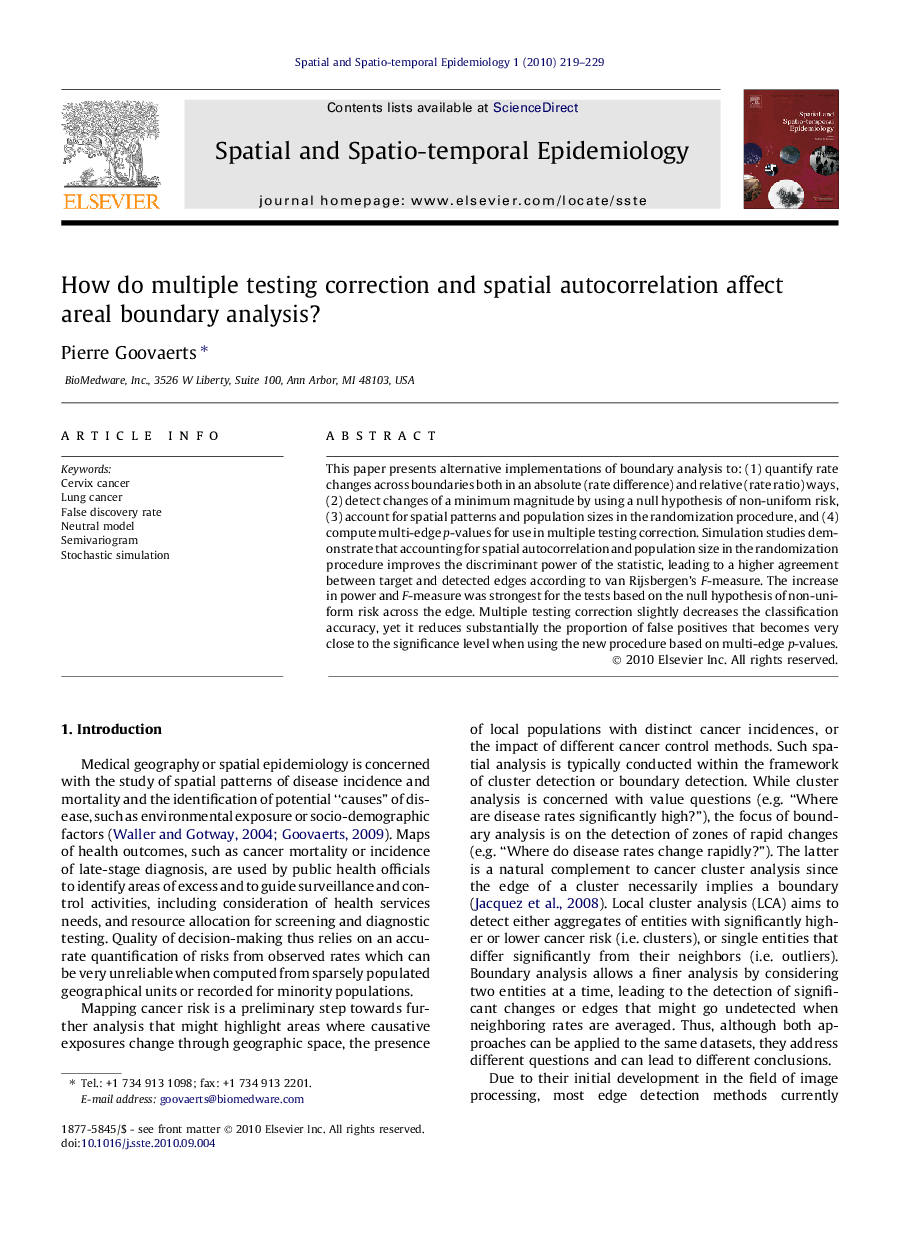| Article ID | Journal | Published Year | Pages | File Type |
|---|---|---|---|---|
| 1064410 | Spatial and Spatio-temporal Epidemiology | 2010 | 11 Pages |
This paper presents alternative implementations of boundary analysis to: (1) quantify rate changes across boundaries both in an absolute (rate difference) and relative (rate ratio) ways, (2) detect changes of a minimum magnitude by using a null hypothesis of non-uniform risk, (3) account for spatial patterns and population sizes in the randomization procedure, and (4) compute multi-edge p-values for use in multiple testing correction. Simulation studies demonstrate that accounting for spatial autocorrelation and population size in the randomization procedure improves the discriminant power of the statistic, leading to a higher agreement between target and detected edges according to van Rijsbergen’s F-measure. The increase in power and F-measure was strongest for the tests based on the null hypothesis of non-uniform risk across the edge. Multiple testing correction slightly decreases the classification accuracy, yet it reduces substantially the proportion of false positives that becomes very close to the significance level when using the new procedure based on multi-edge p-values.
